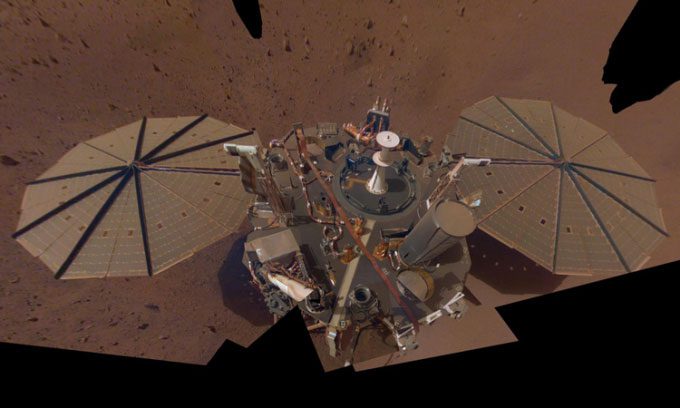The InSight lander, which touched down on Mars in 2018, is expected to cease operations in the coming months due to dwindling energy supplies.
During its three and a half years on Mars, NASA’s InSight lander has provided valuable insights into the interior of the red planet, recording seismic activity and operating far longer than initially anticipated. However, this lander is nearing its final days, as dust continues to accumulate on its solar panels. On May 17, NASA released a timeline for when it is expected to stop functioning.

InSight lander selfie taken in early 2019, covered by a thin layer of dust. (Photo: NASA/JPL-Caltech)
“InSight will soon conclude its scientific life,” said Bruce Banerdt, a member of the InSight team. The dust-covered solar panels have forced the lander to operate with extremely limited power.
The team is prioritizing power for the seismometer, which recorded a massive 5.0 magnitude earthquake in early May. NASA hopes the seismometer will continue operating through the end of spring. Given the current power limitations, it is likely to be turned off by July, when InSight concludes its scientific mission. NASA plans to end all InSight operations by the end of 2022.
InSight landed on Mars in late 2018. When it was new and clean, its solar panels generated enough energy to power its heater for about 1 hour and 40 minutes each day. Currently, that number has dropped to about 10 minutes. NASA hopes a dust storm will occur to clean InSight’s solar panels, increasing its power generation capabilities, but that has yet to happen. The unpredictable weather on Mars can alter operational schedules. A dust whirlwind could extend operational time, while a dust storm could shorten it.
InSight will allocate some energy to position its robotic arm into a “retirement pose,” allowing the camera to observe the seismometer. Once the seismometer stops operating, InSight will occasionally take pictures and communicate with Earth until the power is too low to sustain operations.
Although the impending end of the mission may be sad, the team does not feel overly negative or gloomy, as there is still much to do with InSight, according to Banerdt. The May earthquake—the largest ever recorded on another planet—demonstrates that the lander can still provide significant data even as it approaches “death.”
InSight has enabled scientists to map the interior of the red planet for the first time. “The lander has provided information that we could not obtain from any other spacecraft in NASA’s ‘Mars fleet,'” shared Lori Glaze, director of NASA’s Planetary Science Division.

















































